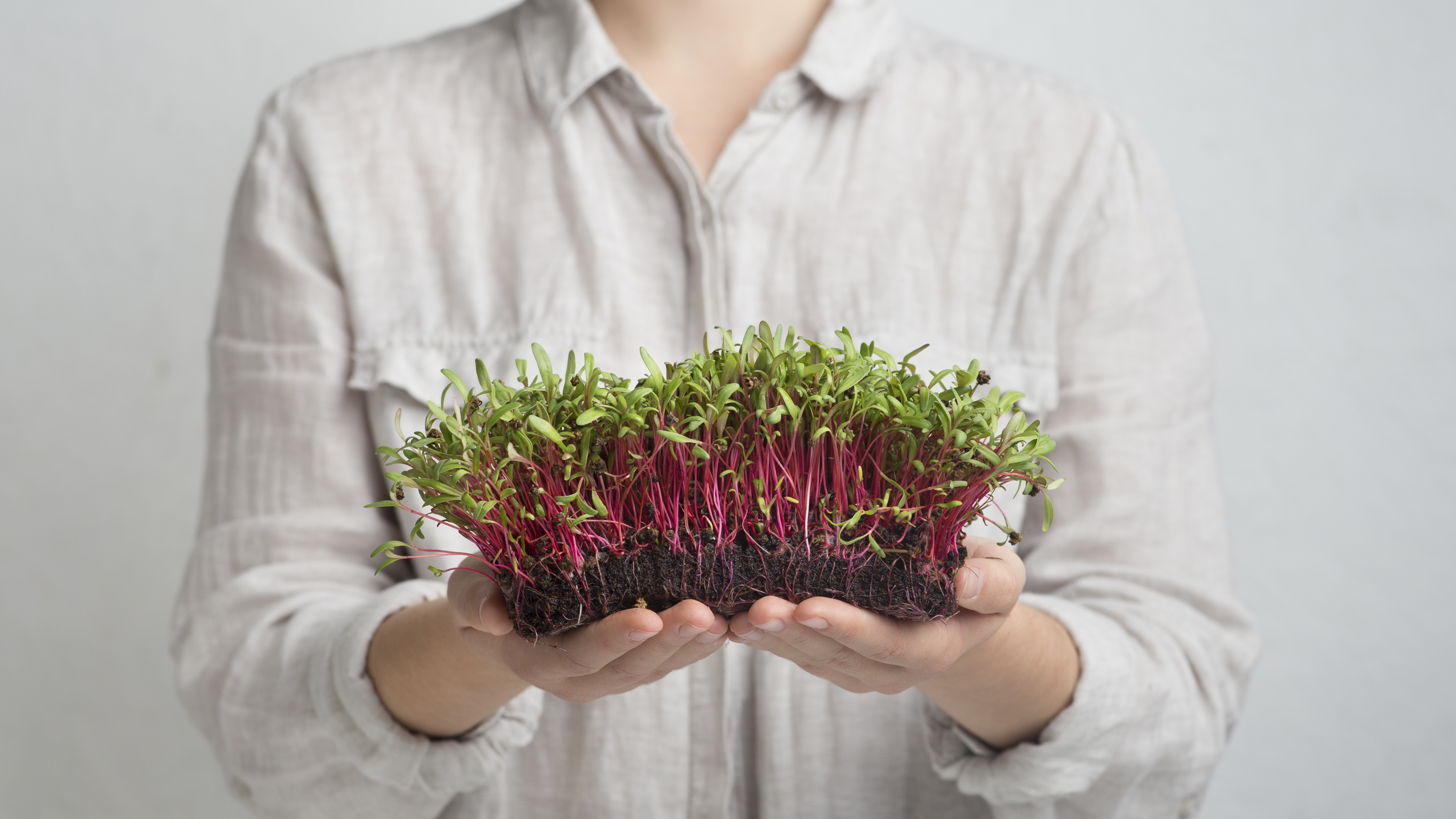
Microgreens: All You Ever Wanted to Know
What Are Microgreens?
Micro greens have taken over the world over by storm. Micro greens are exactly what the name says. Microgreens are young vegetable greens that are approximately 1–3 inches (2.5–7.5 cm) tall. Crops in their micro form are very healthy, have concentrated nutrient content, are rich in flavour, come in a variety of colours and textures and look beautiful as a garnish. Despite their small size, they pack a nutritional punch, often containing higher nutrient levels than more mature vegetable greens. This makes them a good addition to any diet.
They have an aromatic flavour and Microgreens are considered baby plants, falling somewhere between a sprout and baby green.
That said, they shouldn’t be confused with sprouts, which do not have leaves. Sprouts also have a much shorter growing cycle of 2–7 days, whereas microgreens are usually harvested 7–21 days after germination, once the plant’s first true leaves have emerged. These aromatic greens, also known as micro herbs or vegetable confetti, are rich in flavor and add a welcome splash of color to a variety of dishes.
Despite their small size, they pack a nutritional punch, often containing higher nutrient levels than more mature vegetable greens. This makes them a good addition to any diet.
Microgreens are more similar to baby greens in that only their stems and leaves are considered edible. However, unlike baby greens, they are much smaller in size and can be sold before being harvested.
This means that the plants can be bought whole and cut at home, keeping them alive until they are consumed.
SUMMARY
Microgreens are young vegetable greens that fall somewhere between sprouts and baby leaf vegetables. They have an intense aromatic flavor and concentrated nutrient content and come in a variety of colors and textures.
Different Types of Microgreens
Microgreens can be grown from many different types of seeds.
The most popular varieties are produced using seeds from the following plant families (1):
Cereals such as rice, oats, wheat, corn and barley, as well as legumes like chickpeas, beans and lentils, are also sometimes grown into microgreens (1).
Microgreens vary in taste, which can range from neutral to spicy, slightly sour or even bitter, depending on the variety. Generally speaking, their flavor is considered strong and concentrated.
SUMMARY
Microgreens can be grown from various seeds. Their taste can vary greatly depending on the variety.
Microgreens Are Nutritious
Microgreens are packed with nutrients.
While their nutrient contents vary slightly, most varieties tend to be rich in potassium, iron, zinc, magnesium and copper (2, 3Trusted Source).
Microgreens are also a great source of beneficial plant compounds like antioxidants (4Trusted Source).
What’s more, their nutrient content is concentrated, which means that they often contain higher vitamin, mineral and antioxidant levels than the same quantity of mature greens (4Trusted Source).
In fact, research comparing microgreens to more mature greens reports that nutrient levels in microgreens can be up to nine times higher than those found in mature greens (5).
Research also shows that they contain a wider variety of polyphenols and other antioxidants than their mature counterparts (6Trusted Source).
One study measured vitamin and antioxidant concentrations in 25 commercially available microgreens. These levels were then compared to levels recorded in the USDA National Nutrient Database for mature leaves.
Although vitamin and antioxidant levels varied, levels measured in microgreens were up to 40 times higher than those recorded for more mature leaves (4Trusted Source).
That said, not all studies report similar results.
For instance, one study compared nutrient levels in sprouts, microgreens and fully grown amaranth crops. It noted that the fully grown crops often contained as much, if not more, nutrients than the microgreens (7).
Therefore, although microgreens generally appear to contain higher nutrient levels than more mature plants, this may vary based on the species at hand.
SUMMARY
Microgreens are rich in nutrients. They often contain larger amounts of vitamins, minerals and antioxidants than their more mature counterparts.
Health Benefits of Microgreens
Eating vegetables is linked to a lower risk of many diseases (8Trusted Source, 9Trusted Source, 10Trusted Source).
This is likely thanks to the high amounts of vitamins, minerals and beneficial plant compounds they contain.
Microgreens contain similar and often greater amounts of these nutrients than mature greens. As such, they may similarly reduce the risk of the following diseases:
While this seems promising, note that the number of studies directly measuring the effect of microgreens on these medical conditions is limited, and none could be found in humans.
Therefore, more studies are needed before strong conclusions can be made.
SUMMARY
Microgreens deliver a concentrated dose of nutrients and beneficial plant compounds. As a result, they may reduce the risk of certain diseases.
How to Include Microgreens in Your Diet
There are many ways to include microgreens in your diet.
They can be incorporated into a variety of dishes, including sandwiches, wraps and salads.
Microgreens may also be blended into smoothies or juiced. Wheatgrass juice is a popular example of a juiced microgreen.
Another option is to use them as garnishes on pizzas, soups, curries and other warm dishes.
SUMMARY
Microgreens may be eaten raw, juiced or blended and can be incorporated into a variety of cold and warm dishes.
The Bottom Line
Microgreens are flavorful and can easily be incorporated into your diet in a variety of ways.
They’re also generally very nutritious and may even reduce your risk of certain diseases.
Given that they’re easy to grow at home, they’re an especially cost-effective way to boost nutrient intake without having to purchase large quantities of vegetables.
As such, they’re a worthwhile addition to your diet.
